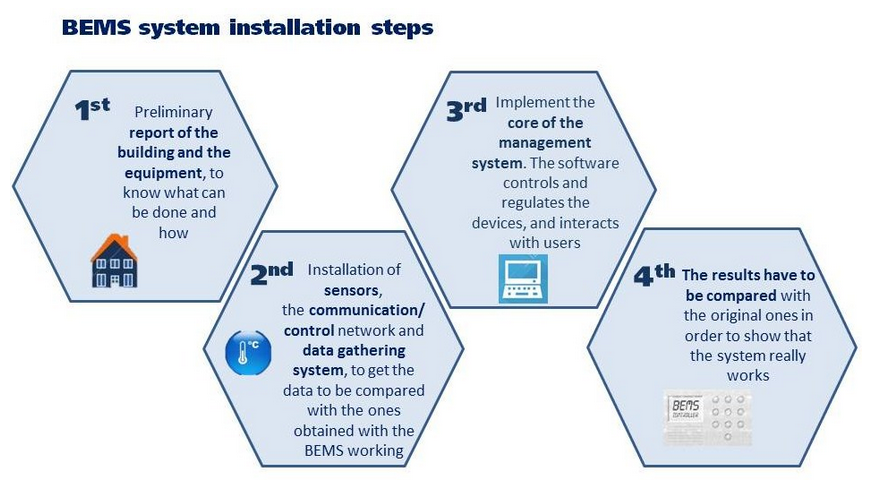Normally the idea that the average citizen has about the savings in the energy bill, depending on the equipment installed, is centred around the sacrifice of the personal welfare (lowering a bit the temperature at home in winter and rising in summer) or making important expenses (like solar panels) that are redeemed in a distant future and could generate something called, in economy terms, “loss of chance”, that can be translated as the money that could be used for some immediate pleasures.
Until not long ago the ways to effectively save were the same expressed beforehand, and it was clear that it could not do anything about with the exception of certain investments from the governments. However, some new tools have appeared recently that, through the means of technologies affordable and available for everyone, can reach the goal of saving money but without sacrificing comfort or making big expenses.
One of the solutions that is currently being developed is the so-called Building Energy Management Systems (acronym BEMS from now on). The BEMS makes use of software that gathers data from several origins (sensors, data bases, weather stations, timetables, polls and commands from users, etc.) and takes some decisions based on defined algorithms which adjust the behaviour of the equipment installed on the building to minimize the energy consumption but always keeping the marked comfort standards. In other words, the BEMS works like a butler who would be adjusting the home devices in order to create comfort optimizing the energy expenditure.
But what does the average user see about all this? Of course, although a user with large knowledge about building equipment and computing could install a simple BEMS, the truth is that the BEMS requires a large quantity of work:

The current commercial solutions require hiring technicians to set up the devices, and also a preliminary report done by the enterprise offering the product. Without question, in order to adjust the final price and minimize problems, the actual BEMS tend to be “locked products”, with fixed components, proprietary network protocols and layouts owned by the company or the consortium/association, and software solutions copyrighted and not accessible to the user or the maintenance service (save for the case that the service is the one offered by the company, obviously).
Taking into account all the former considerations, it is clear that the BEMS still need some research on open systems, also versatile but efficient, to generate some market competition, enhance the current systems, and open the possibility of using them inside the maximum number of dwellings in Europe, where there is a big concern about these issues as long as the dwelling stock there is old, inefficient in terms of energy usage and with poor levels of comfort (from the numbers of the EU, the 75% of the houses don’t apply energy efficiency measurements).
CARTIF, through the Division of Energy, has and still is working on European projects like E2VENT, 3ENCULT or BRESAER that include one BEMS amongst their fundamental elements of r&d, with demo sites in Spain, France, Germany, Poland and Turkey, and where CARTIF has the main role in the development of these systems.
It can be concluded that the BEMS will be, in a short term, an integral part of the equipment of any modern home, in the same way the air conditioning or the telecommunications did in the past, contributing in the enhancement of the welfare and the energy efficiency.
- Maps, a window to knowledge - 14 October 2022
- Management system to save money on the home energy bill - 1 March 2016
- The talking house - 2 February 2016
